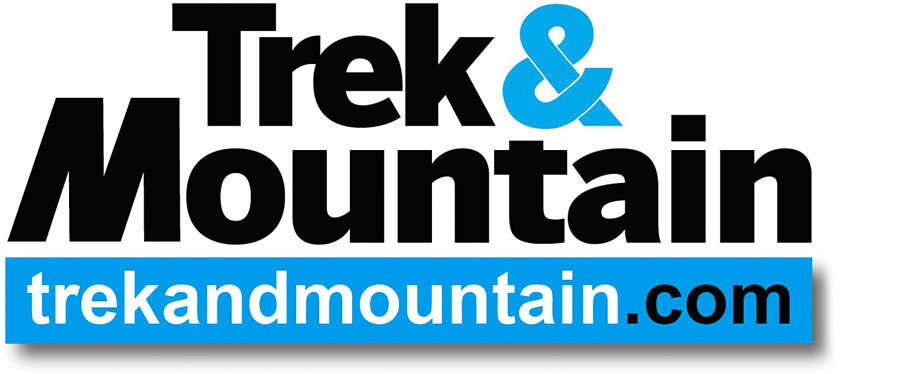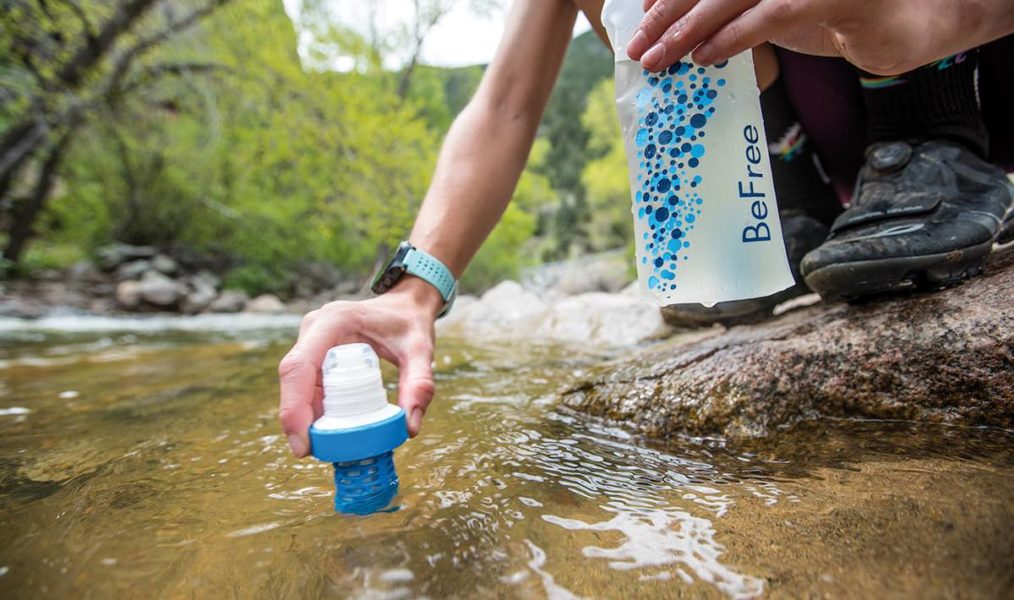I spent a happy couple of hours last week with Roger Chaldecott from Lyon Equipment talking about purifying water in the outdoors. Here’s the thing, despite masquerading as someone who knows a bit about outdoor kit generally, I realised I didn’t know much about water filtration or purification or whatever else you call it and Roger – who is the UK product manager for Katadyn – does. Quite a lot in fact.
So, I purified water by making it into tea and coffee, while Roger fielded my basic questions about the differences between different water cleaning devices and why you might need them. Other brands of water purification are, of course, available and are mentioned – waves at MSR, Lifestraw, Steripen and others. Bear in mind, these are fairly broad brush-strokes and you may want to do some serious research if you’re off on a big trip.
What’s the worst that could happen?
Before you splash out on some super expensive, pump-based water cleansing apparatus, it’s worth considering what your risks are. Not just what might be in the water, but what the consequences might be. The good news, if you’re in the UK, is that if you drink contaminated water, chances are you’ll end up with gut-rot and a swift visit to your GP or A&E. You’re unlikely to suffer any life-threatening situations. Conversely, if you’re deep in the Andes or the Himalaya and go down with dysentery and subsequent dehydration and lack of nutrition, the result could be much more serious – personal experience says take some strong antibiotics proven to work against giardia and amoebic dysentery.
Note: the higher you get above habitation, then vegetation/agricultural land where animals live, the safer the water source is likely to be. Bear in mind that protozoa and viruses are generally spread by human and animal faeces. Nice. In the first case, it arguably makes sense to take basic precautions, but not invest in a really expensive, but more thorough solution. In the latter, the consequences are potentially much more serious, so it’s worth considering a more substantial investment.
Drinking from British streams?
What about people who ‘always drink straight from streams’ in the British hills and have never had a problem? Roger’s take is that they’ve just been lucky. Water sources in the UK are not immune from contamination by animal droppings, cryptosporidium or even giardia cysts, which are more common in the UK than they used to be. But… although the consequences could be unpleasant, they’re unlikely, given easy access to health care facilities, to actually be life threatening. It’s a lottery though and with some basic precautions, you don’t need to have a ticket. So basically, your call, but don’t assume nothing bad can happen.
Three stages of water cleansing
In really basic terms, there are three things you can do to water:
- Make it clear and clean – in other words remove sediment, dead insets, etc.
- Make it safe – remove or kill things that are bad for you like viruses, cysts and so on.
- Make it taste good.
There are various ways of doing this and they all have pros and cons. Choosing what works best for you is down to balancing out all the different factors involved: what are the risks? Viruses, for example, are harder to stop because they’re smaller, but tend to be found mostly close to heavily-populated areas, but if you’re out in the wilderness, they can be less of an issue. How portable does your method need to be? If you’re carrying all your own kit day-after-day, an industrial scale filter set-up may not be the best choice. And what’s your budget?
There’s more to it than this, but those are the basics. You can also combine methods for maximum effectiveness. For example you could filter water initially, but if you were concerned that viruses might still be present, you could then use a sterilising method like a chemical tablet or even UV light. Finally, if you’re going to use your filter a lot, you want to think about ease of cleaning, whether it’s easy to maintain in the field, how long the filter element will last before needing to be replaced and how quickly the filter will produce clean water.
Filters
In a way, filters are essentially simple mechanisms which pass water through tiny holes, which are small enough to stop bad things from passing through them. They can be made from various materials – fibreglass is a relatively affordable option, ceramics are more expensive, but tend to be more durable and easier to clean than a pleated fibreglass-based filter. And then there’s activated carbon, which has a very high effective surface area relative to its bulk and will stop some chemicals, but on its own, isn’t sufficient. You can mix and match different filtration types as Katadyn does with its hand-pumped Vario Filter for example. Or a filter can use just one type.
How fine does the filter need to be?
Well, protozoa – stuff like giardia cysts and cryptosporidia – are relatively large at around 1 micron. Meanwhile bacteria – think salmonella and E. coli – are smaller, at 0.2-0.5 microns. Finally viruses can range from 0.02 to 0.3 microns in size meaning that the one at the small end of the scale are very difficult to filter out. Bear in mind that viruses harmful to humans are found mostly near heavily populated areas and that in real life, they tend to clump together, so filters may well stop them even if technically the individual virus is too small. Filters with pores small enough to stop viruses reliably tend to clog fast.
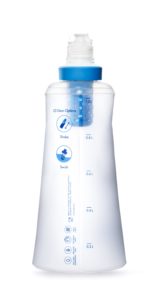
Katadyn BeFree
Minimal bottle filters
For a lot of outdoor use, certainly in the UK, and most developed countries, a simple filter-based bottle may be the easiest answer. Katadyn’s version is the BeFree, a collapsible soft bottle with a built-in 0.1 micron hollow fibre filter that takes out bacteria, protozoa and sediment as you drink from the bottle using an easily-cleaned filter mounted on the underside of the lid. The big pluses are that they include a bottle in the system, so the water is portable – unlike with more basic straw-type filters which work source to mouth using suction – and they’re incredibly fast and simple to use. Ideal for trekking use on the go and for UK streams. It won’t, however, deal with viruses, so beware close to populated areas in developing countries. And be careful too about cross contamination between the outside of the bottle, which will have been exposed to the unfiltered water source, and the drinking valve. The BeFree incorporates a cap to reduce the likelihood of this happening.
Take out: Light, affordable, easy to use these work great a lot of the time.
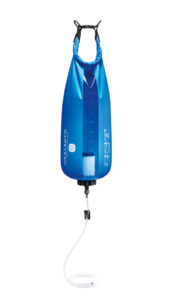
Katadyn Base Camp Pro
Simple Gravity Filters
The next step up are simple gravity-fed, hang-up base-camp filters like the Katadyn Gravity Camp or MSR Gravity Filter. Again very simple and quick for group use. Just fill the bottle and gravity does the work for you.
Take out: Super simple for group use, just hang up on a handy tree or tent point and away you go. If you’re concerned abut virus contamination, you need to add a second layer of purification.
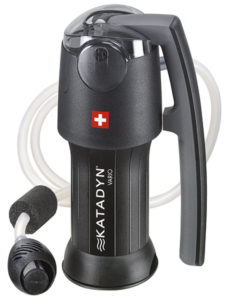
Katadyn Vario
Pump filters
The next stage up the filtration food chain is a pump-operated filter. Like it says on the can, these tend to use a mechanical pump to force water through the filter or filter elements. Generally they use a finer filter than a bottle or gravity-type version. On the plus side, they’re generally designed for small groups, have easy-to-clean filter elements and will filter out bacteria and protozoa along with some viruses – the impressive MSR Guardian will take out viruses as well, but at the expense of increased cost and weight/bulk.
Negatives include complicated construction with the potential for breakage if you’re clumsy. Often you need a pre-filter to remove sediment from the water before fine filtering takes place. You need an additional bottle to store the filtered water and, in really cold conditions, water inside the filter element can freeze and crack the element. They’re also significantly heavier than simple bottle filters if you have to carry them around regularly, though not excessively so.
Take Out The point where filtration gets heavier and more complex. Bear in mind that most filters will still not eliminate all viruses, so you may need to factor in a second layer of purification.
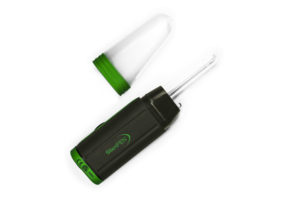
Steripen Adventurer
UV light purifiers
So what about the nifty Purifiers – Steripen for example and the Camelbak All Clear – which use UV light to clean water? The good news is that they take out viruses, bacteria and protozoa, don’t require any pumping and don’t use chemicals. They’re quick too. Normally around one minute for a litre bottle of water. What they do need is a source of electrical power and a back-up option if you need to change the batteries or recharge the internal one in the case of the Camelbak. They also only work with clear water – sediment obstructs light transmission – so ideally you want a fre-filter of some sort and while they don’t alter the taste of the water, if that taste is bad to start with, it’ll stay the same. A UV pen would make a good second stage treatment for water you’ve already filtered, but could be contaminated by viruses.
Take out: There’s something quite cool about UV light purification, but you do need to ensure you have a reliable power source and, in many cases, some sort of pre-filter to ensure the light can diffuse easily through the water.
Chemical treatments
Another alternative is some form of chemical treatment. Iodine has left the building thanks to a number of factors – not effective agains protozoa and bad for your thyroid – leaving silver and chlorine-based tablets as the main options. Both will be effective against protozoa, bacteria and viruses, they are cheap, lightweight and easy to use, even in large quantities of water. The downside is that they take time to work, around 30-minutes to an hour for chlorine and as long as four hours for silver.
In the case of chlorine, they leave an unpleasant taste. And any sediment needs to be filtered out first unless you want to drink it. There are post treatment solutions available which will remove the chlorine taste. Additionally, Chlorine Dioxide generating tablets can work in as little as ten minutes, kill bacteria, viruses and cysts and don’t leave an aftertaste. It’s also worth bearing in mind that whereas chlorine is a temporary agent and stops working after approximately one hour, silver – although it takes longer in the first place – can last up to six months allowing you to store the water safely.
Micropur produces some tablets that combine both chlorine for initial disinfection and silver ions for longer term conservation. A sort of best of both world’s solution. In a nut-shell: chlorine is quicker, but leaves an aftertaste. Silver-based tablets take longer to work initially, but have an ongoing action which lasts up to six months to keep purified water safe in the longer term.
Take Out: Chemical treatment is light and easy to use, but takes time to work. In conjunction with a filter, it adds an extra layer of protection.
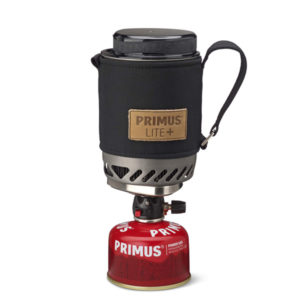
Boiling
Along with brewing, boiling water – hello tea, hello coffee – is a proven way of killing pretty much everything and one that you’re probably going to have access to if you’re camping and cooking. In really cold conditions where your main source of water is from melting snow and ice, it’s also the most obvious one-step process to make your water safe. At sea-level you simply need to let the water reach a rolling boil – no need to maintain it for several minutes – to be sure that you’ve killed the nasties. To be absolutely sure, give it around one minute. Boiling for longer has no benefit and wastes valuable fuel.
At high altitudes – above approximately – 2000 metres, ie most greater ranges mountains and many big mountain treks – water boils at a lower temperature, so you need to leave it at a rolling boil for longer, the US Centre for Disease Control suggests three minutes. What you need to remember is that purifying water by boiling isn’t an on/off process, at temperatures slightly below boiling point, most pathogens are already dead. Even if you were to brew up on the summit of Everest where effective boiling point is approximately 70˚C, which is still high enough to kill pathogens after a minute or so exposure.
Take Out: On high mountains and in cold places, boiling is probably your best solution as you’ll be melting snow anyway. Even on the go, it may well be more efficient to simply stop and fire up a stove than to try and carry enough water from the get go. If you do melt snow, it’s easiest to start off with a small amount when you first light the stove then add more gradually to the hot water initially produced.
Where to get water from
One final point, we’ve already mentioned that the higher and closer to the source of the water you go, the cleaner it’s likely to be to start with. You’re also best using fast-flowing water. Try to collect water away from the banks as this is where bacteria are most likely to thrive in slow-moving or stagnant water. Out towards the middle of a water source is where the water is likely to be cleanest. Of course though, your filtration / purification strategy should keep you safe regardless.
The big picture
Going back to where we started, there are a wide range of water filtration and purification options out there, but the key is to understand what each one does and its pros, cons and limitations…
… and then to have a good idea both of the potential risks your dealing with AND what the potential consequences of infection might be. And if all else fails, kick back, brew-up and enjoy a nice, safe cup of tea.
For more info on Katadyn water filters, do to www.lyon.co.uk
